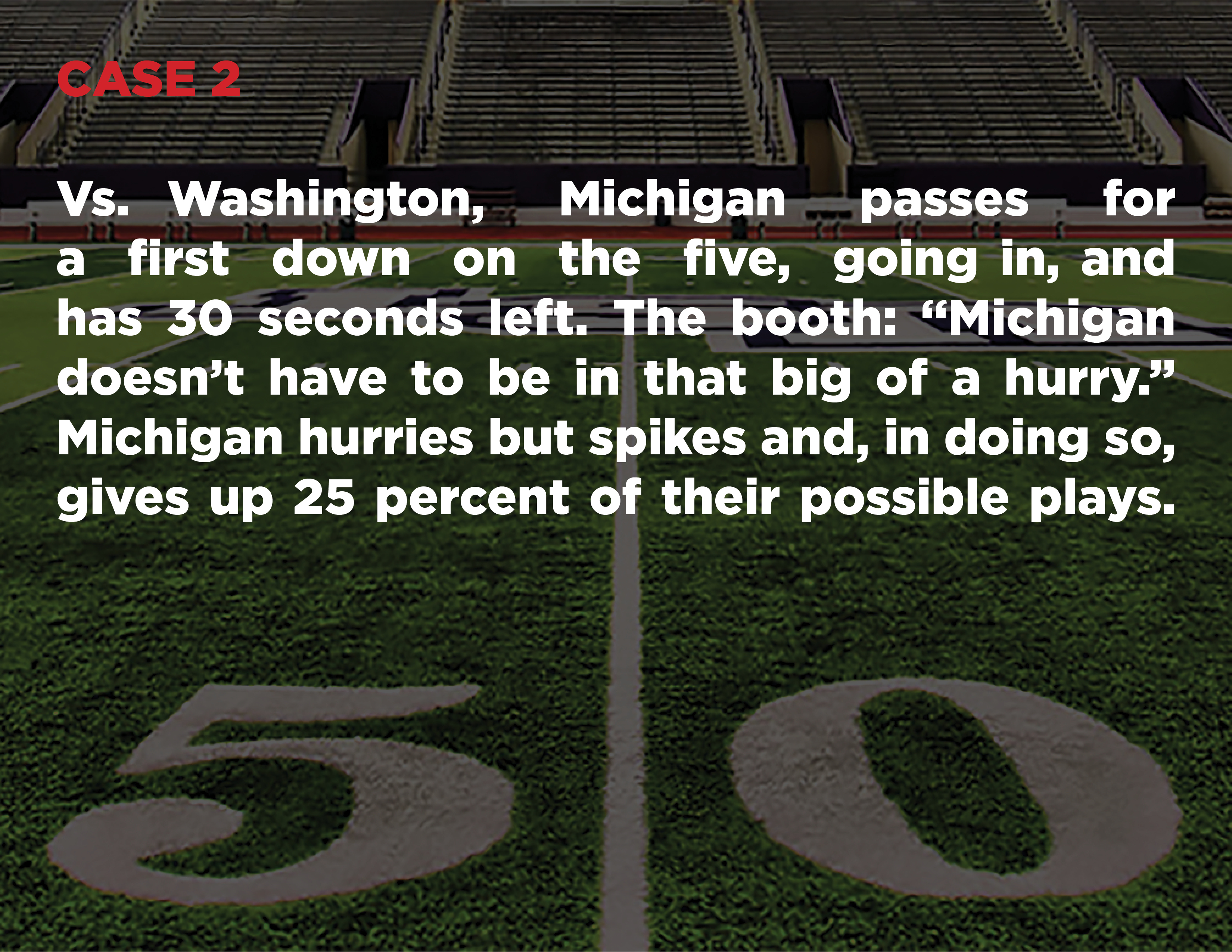Using the Intentional Incomplete Pass, the Spike
Posted by Homer Smith on Nov 11th 2019
The clock is running. Time is winding down. The offense rushes to the line.
Do you call a play or spike the ball? Are those seconds worth the extra down?
It’s time to decide. Let me help you.
A spike does two things:
Stops the clock. Whether out of time outs or not wanting to use that last one just yet, a spike stops the clock in order to get the right personnel on the field. Whether that’s the field goal team or a different package of players depends on how much time is left. If it’s second-and-short, you might consider spiking the ball to set up a running play and a first down as well.
Buys time. Including the seven to 10 seconds it takes for the officials to set the football, spiking the ball also gives you 35 more seconds before initiating the next play. That’s 45 seconds or so to alleviate the pressure, make sure the right people are on the field and that the correct play is called.
What does a spike cost?
Stopping the clock and buying some extra time are good results, but what does that strategy cause you. Two things:
A down. Don’t underestimate what having three downs – not four – means when trying to convert a first down.
A few seconds. Even teams that practice spiking the ball don’t always get lined up cleanly right away. Running your receivers or linemen to the line and being set will cost some time. Make sure the QB doesn’t call for the ball until everyone is in place, or it will also cost you five yards.
When to spike it
The best time to spike the ball is coming out of a first down. The clock is already stopped to set the chains. The offense can be lined up in a predetermined formation, and the quarterback can make sure there are enough people on the line of scrimmage before the ready-for-play whistle blows.
It typically takes a second or two to run the spike, depending on how fast the center can get the ball off.
If you are out of time outs and there are three, four or five seconds left on the clock, these are natural times to spike it. Done correctly, this will leave you with one more play.
With six or more seconds left, you likely can snap the ball normally. This has the advantage of not allowing the defense extra time to get set.


Let’s look at a scenario where a spike can actually cost you a play.
Both series begin with temporarily stopped clocks at 19 seconds. The numbers at the beginning is the time on the clock, and let’s assume that a snap takes one second, a spike takes one second and an incomplete pass taxes six.
Scenario 1
0:20. First down. Ball is blown ready for play and clock starts.
0:19. You snap and pass incomplete.
0:13. Second down. You snap and pass incomplete.
0:07. Third down. You snap and pass incomplete.
0:01. Fourth down. Time for a fourth pass. Touchdown.
Scenario 2
0:20. First down. Ball is blown ready for play and clock starts
0:19. You snap and spike.
0:18. Second down. You snap and pass incomplete.
0:12. Third down. You snap and pass incomplete.
0:06. Fourth down. You snap and pass incomplete. Game over
Because of the spike, you never got to throw that fourth pass when there would have been time for it.
Conclusion
Coaches face a lot of decisions down the stretch of games – when to stop the clock and how to stop the clock among them.
It is important to practice how to get players in position quickly in order to spike the ball so those precious seconds don’t run off the clock when they are needed most. It also is important to study film in order to realize how long each pass play will take.
Through practice and charting these calculations, you can ensure getting the maximum number of plays off before time runs out.
Homer Smith was the head football coach at Davidson University (1965-69), University of the Pacific (1970-71) and the U.S. Military Academy at West Point (1974-78). He also served as an offensive coordinator at UCLA, Alabama, Arizona and with the NFL’s Kansas City Chiefs.
